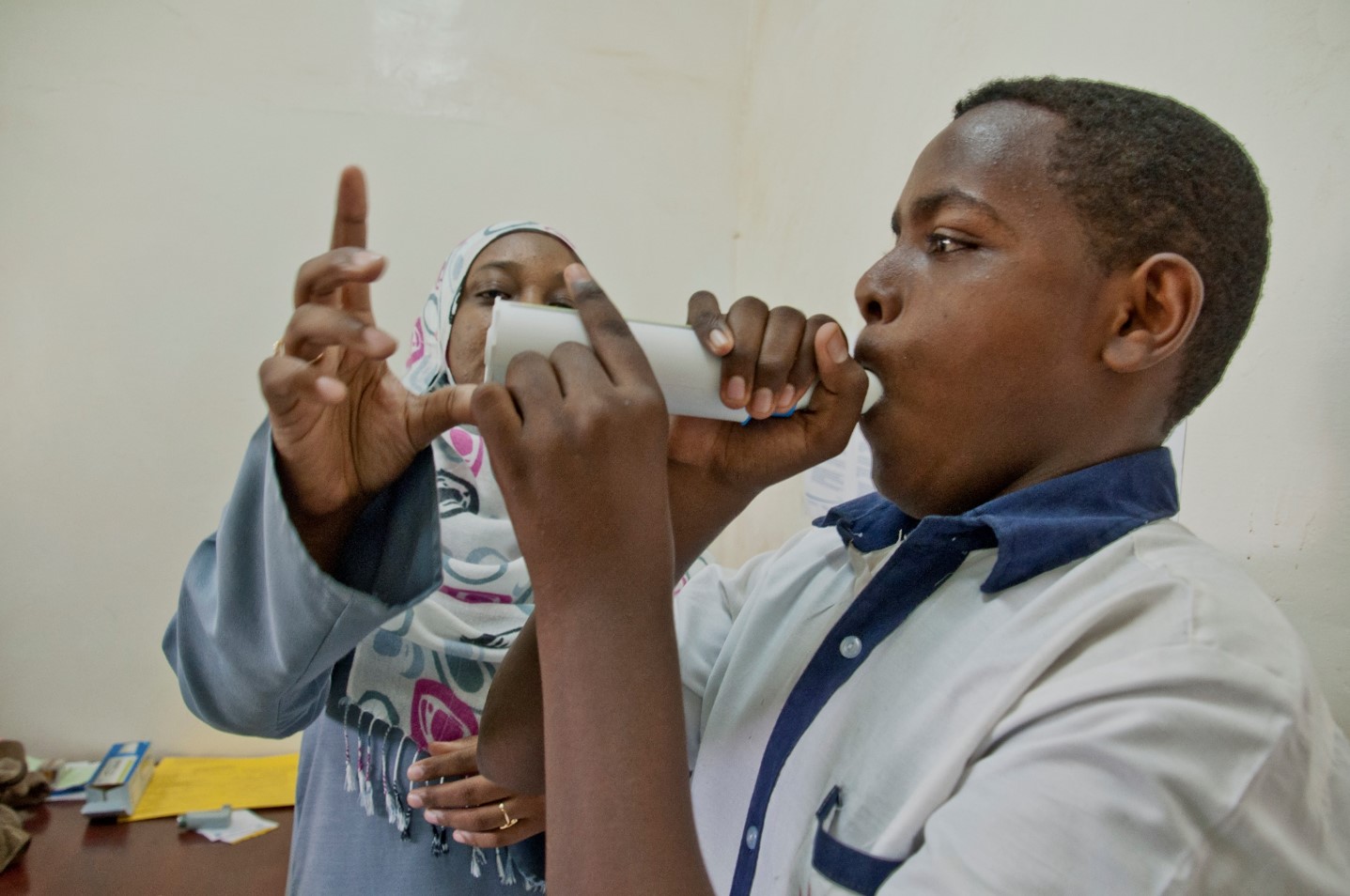
New Approaches with Asthma Medicines
There are two key types of essential asthma medicines: short-acting bronchodilator inhalers which provide only short–term symptom relief and inhaled corticosteroid (ICS)-containing medicines, which treat the underlying airway inflammation. Unfortunately, many patients with asthma are managed without ICS, as shown by the recent Global Asthma Network (GAN) Phase I study (Chapter 5). For many patients, this is because they lack access to affordable quality-assured ICS. In addition, even after ICS became widely available, the sole use of short acting bronchodilators for initial treatment was recommended for decades, contributing to over-reliance and/or overuse of them, and failing to provide any protection against exacerbations.
In 2015, The International Union Against Tuberculosis and Lung Disease (The Union) proposed that the use of both ICS and rapid acting β2-agonist together, as needed for symptom relief, might be a better option than rapid acting β2-agonist alone. This was, in part, because the Asthma Drug Facility (ADF) pilot project implemented in Benin, China, El Salvador, and Sudan revealed that many people with asthma who had frequent emergency visits or hospitalisations were prescribed only inhaled bronchodilators for symptom relief. Furthermore, several clinical trials in patients with mild or moderate-severe asthma had demonstrated that those people who used both ICS and rapid acting β2-agonist as needed for symptom relief, with or without a maintenance ICS-containing inhaler, had a lower risk of asthma exacerbations compared to those who used rapid acting β2-agonist as their reliever. However, at the time, combination ICS-rapid acting bronchodilator inhalers were not affordable for disadvantaged populations. Therefore, The Union looked for quality-assured affordable generic products of combination inhalers through ADF. In the interim, The Union proposed concomitant use of separate inhalers of ICS and short acting β2-agonist (SABA) for rescue therapy, pending the availability of affordable combination inhalers containing both ICS and a bronchodilator.
The Global Initiative for Asthma
In their 2019 Strategy, the Global Initiative for Asthma (GINA), prompted by concerns about the risks and consequences of commencing asthma treatment with SABA alone, and based on new evidence about a safe and effective alternative, made a historic change in recommendations for asthma management. This resulted from a comprehensive review of evidence on the adverse outcomes of SABA-only treatment and the impact of ICS on asthma exacerbations and deaths in mild asthma. This review included two large clinical trials of as-needed use of ICS in combination with formoterol (a long-acting β2-agonist with rapid onset of action) in patients with mild asthma. GINA concluded that adults and adolescents with asthma should not be treated with SABA alone. Instead, GINA recommended that all adults and adolescents with asthma should receive either symptom-driven (in mild asthma) or daily ICS-containing treatment, to reduce their risk of serious exacerbations. These recommendations were supported by a further two open-label studies in mild asthma, in which as-needed ICS-formoterol was used as it would be in real life.
In mild asthma, the preferred option is now as-needed combination inhaled ICS-formoterol, taken whenever symptom relief is needed. Fortunately, this formulation is now included in the Essential Medicine List of the World Health Organization (WHO) after a working group of The Union successfully applied for its addition in 2016. Pragmatic studies are needed to assess the feasibility, effectiveness, safety and cost-effectiveness of this intervention in low-and middle-income country (LMIC) settings.
ICS and β2-agonist inhalers for children with asthma
Although the evidence is clear for the use of as-needed combination ICS-formoterol for adults and adolescents with mild asthma, there are no such studies in children aged <12 years. For children 6–11 years with mild asthma, the current GINA recommendation is regular low dose ICS plus as-needed SABA or, for those with very infrequent symptoms, taking ICS whenever SABA is taken. For children 6–11 years with moderate-severe asthma, as-needed ICS-formoterol is an option as part of maintenance and reliever therapy in Steps three and four. There is currently a lack of evidence for use of any of these combination therapies for children aged ≤5 years with mild asthma, with regular low dose ICS still the preferred choice. Evidence is urgently needed as it is likely that children ≤5 years with established asthma might also benefit from as-needed combination ICS-formoterol or ICS-SABA, as many do with regular ICS.
Cochrane review
Recently, a systematic review and meta-analysis concluded that as-needed use of combination ICS-formoterol inhalers was clinically effective in adults and adolescents with mild asthma. Compared with as‐needed SABA alone, as‐needed ICS-formoterol in adults and children ≥12 years reduced exacerbations requiring systemic corticosteroids (e.g. 109 individuals per 1000 will experience an exacerbation over 52 weeks with SABA alone vs 52 per 1000 with ICS-formoterol). As needed ICS-formoterol may also reduce the risk of asthma‐related hospital admissions or Emergency Department visits and exposure to systemic corticosteroids, without increasing adverse events.
Access to affordable, quality-assured, essential asthma medicines
One of the main barriers in the management of asthma has been the lack of affordable quality-assured, essential asthma medicines, especially in resource-limited settings. ICS is frequently not available and they and combination inhalers are prohibitively expensive for patients in LMICs, or may be poor quality. To ensure that the new recommendation of using combination inhalers as needed for symptom relief will be beneficial for all asthma patients, it is critical to ensure that quality-assured combination inhalers are also accessible and affordable in resource limited settings.
Next: Asthma in the Context of Other Chronic Respiratory Diseases in LMICs >

